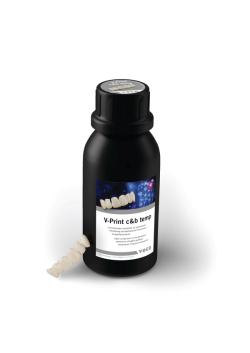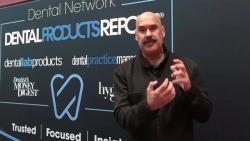- About Us
- Advertise
- Editorial
- Contact Us
- Terms and Conditions
- Privacy Policy
- Do Not Sell My Personal Information
© 2025 MJH Life Sciences™ and Dental Products Report. All rights reserved.
Making Sense of Matrices
Matrix use during restorative dentistry contributes to case success. We examine how, why, and what different types of matrices can do for which cases to help your clinical outcomes.
Using a matrix during restorative work contributes to case outcomes in multiple ways. We examine how matrices help with restorative work, why they increase success, what makes a system helpful, and what options are available for different cases.
How a Dental Matrix System Can Help with Restorative Dentistry
Jason Goodchild, DMD, Vice President of Clinical Affairs at Premier Dental Products Company, says the most common direct posterior restoration is Class II per the American Dental Association (ADA). And that proper restoration of interproximal areas via an efficient matrix system is critical to restorative success.
Along with the proper materials and techniques, understanding the mouth’s form and function is essential to avoid poor outcomes for restorative cases. The matrix system helps shape and contour dental restorations by maintaining their form during placement and setting.1
A flexible band that wraps around a natural tooth, the dental matrix conforms to the tooth's surface, recreating the natural curves and walls possibly missing in the interproximal area. This band holds the restorative dental material in place, ensuring the completed restoration takes the right shape and fits well between adjacent teeth.2 Matrices also allow clinicians to create a non-retentive surface finish for plaque or food debris, reducing the chances of secondary caries. Additionally, using a dental matrix for your restorative work increases the longevity of composite restorations and protects the adjacent teeth during cavitary prep.2
Before everyone was using composite for these restorative procedures, clinicians used amalgam. The Tofflemire-type systems worked well with that material, Dr Goodchild explains. However, dentists needed a new solution since the migration to dental composite materials, which clinicians cannot pack into the system the same way they could when using amalgam. Hence, the sectional matrix systems came into play around 20 years ago.
“Those sectional matrices had 3 pieces: a ring, a matrix, and a wedge. The wedge is supposed to push the matrix against the tooth, but the ring is designed to separate the tooth to account for the thickness of the matrix and to help achieve proper contact,” Dr Goodchild says. “The matrices are usually pretty contoured, designed primarily for composite.”
Why Does Proper Recreation of the Interproximal Area Matter?
Restoring the interproximal area is critical. The contact area, the interproximal niche, and the triangular-shaped interdental papilla are crucial in protecting the gums. However, having proper contact between teeth also contributes to the stability of the dental arches by providing combined support.2
Proper interproximal contact also avoids future oral health problems. Improper contact or having open spaces between teeth can cause misalignment in the arch. It also contributes to oral health issues like food getting stuck in gaps, bad breath, cavities, and gum disease.3
What Characteristics Make a Dental Matrix Helpful?
A few qualities of a dental matrix system can help improve your treatment workflow. Per DentalTix, a dental supplies distributor in Spain, there are a few characteristics of a helpful dental matrix2:
- It needs to be stiff for easy insertion between teeth.
- It must work well with the restorative materials. (For example, celluloid matrices can interfere with acrylic resin settings. Also, adhesives might stick the restorative material to the matrix, hindering removal.)
- It should adapt easily to the tooth's shape and secure a snug fit with minimal pressure.
- It should have enough flexibility for contouring and adapting to restoration edges.
- It must resist pressure to stay in place during condensation, preventing slipping.
- It should have a minimal thickness to prevent excessive space between adjacent teeth and facilitate easy removal upon completion.2
The Types of Matrices
DentalTix also explains that dental matrix systems have different types. Some differ in material, with metal options like steel or titanium and plastic choices such as acetate or celluloid, which may be less durable but permit the passage of photopolymerization light. Also, some matrices are universal and standardized, like Tofflemire-type matrices, while others are custom-made by dentists for specific cases. Additionally, some matrices have fixed shapes due to their elastic memory, while others, like laminated matrices, can be modified to enhance contour and contact points. Finally, adaptation systems differ, meaning some matrices remain stable without a holder, while others require one for proper adaptation.2
Two types of dental matrix systems are circumferential and sectional:
Circumferential matrices are already shaped in 3 dimensions and, when combined with wedges and separators, create tight contacts between teeth. They are comfortable and provide good visibility for quick work on a section of teeth.
Sectional matrices are shaped like natural teeth, and have a long lifespan. Dentists use sectional matrices when they want to achieve the best tooth shape and function and save as much of the natural tooth structure as possible.3
A 2021 British Dental Journal study suggests sectional matrices can be challenging. First, they require specific techniques, which could lead inexperienced clinicians to use circumferential matrices even if sectional matrices might lead to better clinical outcomes. Second, sectional matrices have numerous options. For dentists with limited experience in this area, choosing the optimal sectional matrix system can feel overwhelming. Additionally, sectional matrix techniques with separating rings establish predictable contact areas but could lead to a concavity in the restored surface there. This concavity is hard to clean, allowing the buildup of biofilm that could go unnoticed clinically, leading to caries on the neighboring surface of an untreated tooth.4
That same study says that circumferential matrices have some drawbacks, too. Recreating a natural emergence is challenging, making achieving a proper contact area difficult. Also, contact might exist as a single point rather than a broad area and in a non-natural position. This situation results in a ridge more prone to fracture and a flatter emergence form that can catch and shred floss, leading to patient complaints. Combining a higher or non-existent contact point and a flatter, non-natural cervical emergence increases the chances of incomplete papilla infill, creating spaces below the contact point where food can get stuck. Additionally, the design of the circumferential matrix holder can also limit access for wedge placement, impacting their effectiveness.4
A 2021 study looked at the performance of each of these types with respect to pediatric patients. The researchers determined that the circumferential matrices were more time-efficient, but the sectional matrices produced more restorations with ideal contacts. Overall, the preference favored the circumferential matrix band system for its efficiency, except when clinicians were aiming for ideal contacts in pediatric cases.3
A 2016 paper suggests the specific matrix system significantly influenced tooth anatomy and treatment success. The paper also looked at the evidence for the advantages and disadvantages of the various dental matrix types, which include the following5:
Thin, Sectional Matrices:
Pros:
Provide tight interproximal contacts.
Show fewer problems with marginal overhangs.
Cons:
May result in concave contours.
Less effective in avoiding overhangs.
Circumferential Bands (Tofflemire-type):
Pros:
Produce flat contours.
Decrease the occurrence of marginal overhangs.
Cons:
Interproximal contacts may not be as tight.
Traditional bands may have more problems with fitting.5
Dr Goodchild says that like most dental materials and systems, clinician develop a feel for a given system and tend to stick to it. Some of the common Matrix Systems that clinicians choose are the Garrison’s Strata-G,Palodent Plus, Premier X5 Sectional Matrix System, andUltradent’s Halo Sectional Matrix System. Each have their distinguishing characteristics that may appeal to a clinician.
For example, the Premier X5 Sectional Matrix System comes with 10 Universal Matrix Rings made of their proprietary resin. This feature makes it possible to have more rings in the practice without being concerned about accidentally throwing one away. By contrast, the rings in other systems can be expensive to replace.
“We came up with this idea of having a resin that will hold its shape and create the separating force, but it's less than $4 per ring. So, you can buy a bag of 30 rings and have enough rings around the office. Or they could be used in a school where they can become disposable after single-patient use,” Dr Goodchild explains. “It’s just a different approach, and all of it will work. Do you like to have 1 ring that you protect with your life and don't throw that thing away, or do you have 30 rings lying around that you can throw away and pick up a brand new one each time?”
So, When Do You Use Either Type?
Brett Richins, DMD, Clinical Advisor for Ultradent Products, Inc., writes on the Ultradent Blog that his preferred choice for regular Class II restorations with well-aligned adjacent teeth and no major damage is a sectional matrix system.6 Sectional matrix systems offer a fast and reliable way to achieve good results. However, having circumferential bands as part of the tools is crucial. In specific situations, like when there's no adjacent tooth or restoring the buccal or lingual surface, Dr Richins prefers circumferential bands. In the past, when he was focused solely on sectional bands, he would sometimes try to rebuild these teeth without any matrix system. Now, he realizes that circumferential bands help him quickly and easily place a restoration in the intended area, avoiding frustrating situations.6
In Dr Richins's Salt Lake City practice, circumferential bands prove helpful when dealing with patients who have missing cusps, a situation where sectional matrices may result in under-contoured restorations due to insufficient tooth structure support. Additionally, circumferential bands are particularly advantageous in pediatric cases, where placing sectional bands on primary teeth can be challenging, and achieving critical contours is less straightforward. For restoring MOD in primary teeth, circumferential bands are often more stable and efficient in Dr Richins' approach.6
Dr Goodchild says that many clinicians have likely adopted a sectional matrix system. However, sectional matrices require more technique to place than a Tofflemire-type, and the case's complexity (e.g., the morphology or existence of misalignment makes it difficult to seat the ring) can steepen the technique’s difficulty. Likewise, multiple restorations in a quadrant increases the technical difficulty of using a sectional matrix. Dr Goodchild says he might use a Tofflemire-type, or both systems in some of those more complicated cases.
“When I have a Class II on my schedule, I plan to use a sectional, but sometimes it doesn't work, or I can't get it seated. So, I still need a Tofflemire-type matrix system in my office,” Dr Goodchild says. “There is always the right tool for the right job.”
References
Vaishnavi Rajendra Patekar, V. R., et al. Choice of Matrix System in Dentistry. Accessed January 16, 2024. https://www.jrmds.in/articles/choice-of-matrix-system-in-dentistry.pdf
The definitive guide to dental matrices: choose the best one for each case. Dentaltix. Accessed January 16, 2024. https://www.dentaltix.com/en/blog/definitive-guide-dental-matrices-choose-best-one-each-case
Bhatia HP, Sood S, Sharma N, Singh A, Rajagopal V. Comparative Evaluation of Clinical Efficiency and Patient Acceptability toward the Use of Circumferential Matrix and Sectional Matrix for Restoration of Class II Cavities in Primary Molars: An In Vivo Study. Int J Clin Pediatr Dent. 2021;14(6):748-751. doi:10.5005/jp-journals-10005-2060
Bailey, O. Sectional matrix solutions: the distorted truth. Br Dent J. 231, 547–555 2021. https://doi.org/10.1038/s41415-021-3608-5
Owens BM, Phebus JG. An evidence-based review of dental matrix systems. Gen Dent. 2016;64(5):64-70.
Circumferential Vs. Sectional Matrix Bands, The Arch. Accessed January 19, 2024. https://blog.ultradent.com/circumferential-vs.-sectional-matrix-bands#:~:text=Sectional%20matrix%20systems%20are%20my,way%20to%20achieve%20ideal%20outcomes



